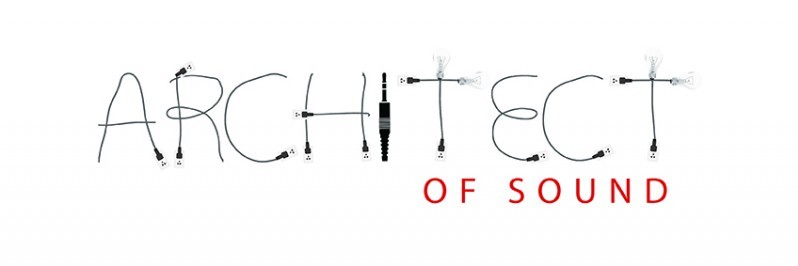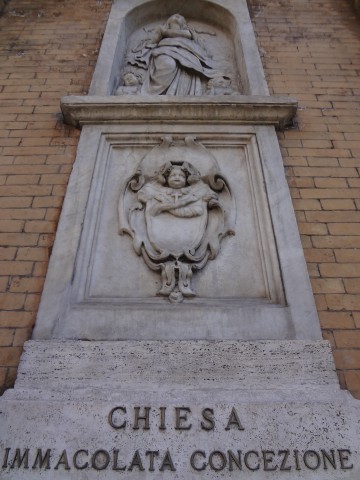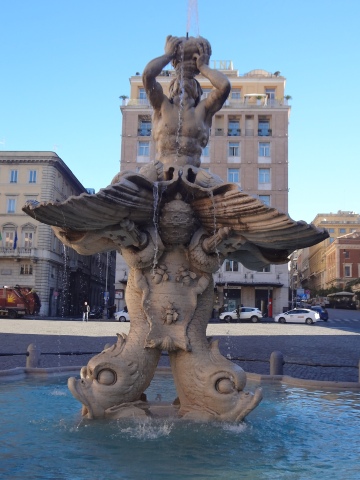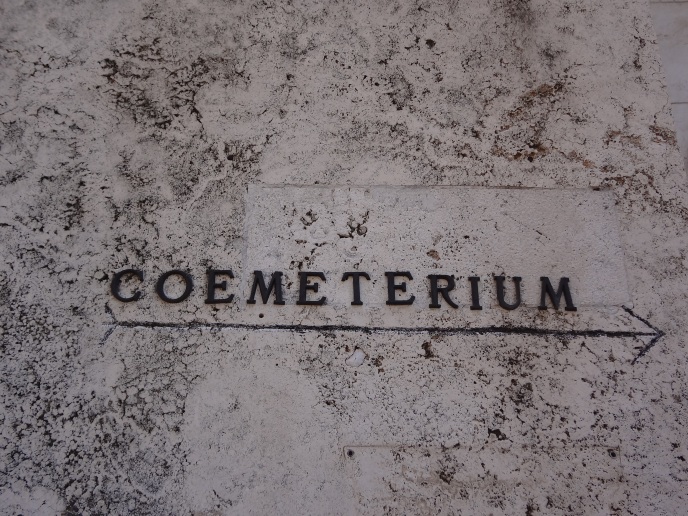Santa Maria della Concezione dei Cappuccini.
Above is a picture of an old church in Rome known as the Santa Maria della Concezione del Cappuccini which translates to ‘Our lady of the conception of the Capuchins’.
The first Capuchins were known as Hermit Friars Minor but were later called ‘Capuchin’ because of their hood, Cappuccio in Italian. The Capuchins were first established in Rome for a few months in 1529 at Santa Maria dei Miracoli on the Tiber to care for the incurable inmates of the nearby hospital of San Giacomo.
They moved around a few places for various reasons before securing a permanent residence. Pope Urban VIII, The Pope’s brother, cardinal Antonio Barberini was a capuchin and took a direct interest in the construction of the new headquarters for the order. The site was to be in the vincinity of Palazzo Barberini which faces Piazza Barberini. The Church and complex was commissioned by Pope Urban VIII and the first stone was laid on the 16th March 1626. Until March 1890 the complex housed the general curia, provincial religious family, students of theology and philosphsy, a wool factory and later a printing factory. The Church and cemetery beneath it are all of what remains of the complex.
The ‘Santa Maria della Concezione del Cappuccini’ is located on the Via Veneto, a turn off from Piazza Barberini. Beside the church is a museum dedicated to the Friars Minor Capuchin to highlight the spiritually of the religious order who live a simple, humble and sober way of life who have a strong brotherly love towards one another. In the museum you will find a tasteful respectful representation of Capuchin life with various kinds of impressive artwork such as ‘Saint Francis in Prayer‘ by Italian artist Caravaggio, books, documents, garments, instruments, sculptures and stories all relating to almost 500 years of capuchin life.
“What you are now we used to be; what we are now you will be…”
The main reason we decided to visit here was to see the Capuchin Crypt. You are not allowed to take any pictures in the museum and the crypt. The strict regulation enables you to take in the surroundings around you. If you try to sneak a picture, you will be asked to leave, trust me.
The Crypt can be assumed it was created between years 1732 – 1735. The display consists of around 3,700 people, skull and bones who are mostly Capuchin Friars, comprised into a corridor with 6 chambers opening up displaying the artistic expression. The earth in the cemetery was brought back from holy land Jerusalem. No-one knows for sure what artist done this, there are different rumours who done this relating to capuchin painters or priests. The crypt atmosphere feels more powerful when accompanied by sacred music from Italian Renaissance composer Giovanni Pierluigi da Palestrina (listen below) which was played during our visit.
It’s quite hard to put into words the feelings you gain when walking through the corridor of this crypt. Artistically it is quite amazing, peaceful and respectful but you can’t help but feel that life on this planet is short especially when death is staring right back at you.
The Catholic religious order says the display is not to strike fear into anyone but a silent reminder of the swift passage of life on earth and our mortality.





Very interesting to know about the Capuchins !
Thanks Gin! It’s worth a visit if you and your boyfriend ever visit Rome 🙂 Keep enjoying your travels!